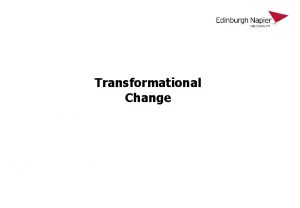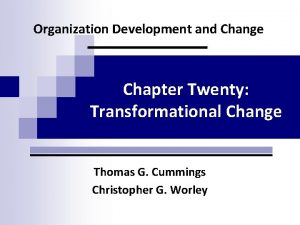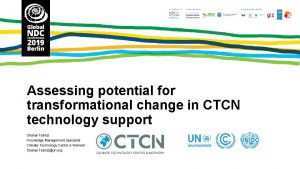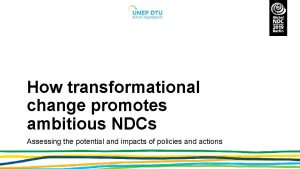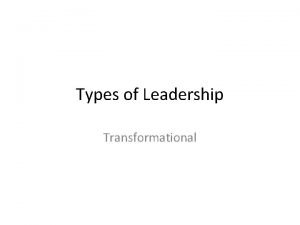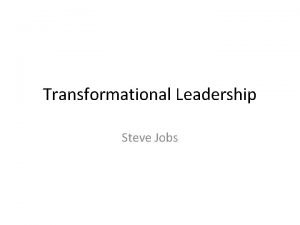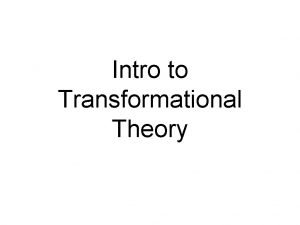Assessing potential for transformational change in CTCN technology











- Slides: 11

Assessing potential for transformational change in CTCN technology support Shanar Tabrizi Knowledge Management Specialist Climate Technology Centre & Network Shanar. Tabrizi@un. org

Climate Technology Centre & Network (CTCN) mission and mandate Mission to stimulate technology cooperation and enhance the development and deployment of technologies in developing countries at their request

CTCN service areas and core sectors

Applying the ICAT Transformational Change Guidance Case: Tonga Energy Efficiency Masterplan

Rationale and objectives Technology Framework (Decision 15/CMA. 1): … improving the effectiveness and efficiency of the Technology Mechanism… by addressing the transformational changes envisioned in the Paris Agreement § Understanding transformational change in the context of climate technology transfer § Supporting CTCN M&E processes by strengthening methodologies for assessing long-term and transformational impacts § Increasing ambition of NDC implementation by applying lessons learned in CTCN service provided to developing countries § Evaluate potential transformational change as a result of CTCN technical assistance in Tonga to develop an Energy Efficiency Masterplan

Overview of process Vision for transformational change Defining process and outcome characteristics

Results in short Outcome: Extent of transformation Process: Likelihood of transformation Major Very likely Likely Possible Unlikely Very unlikely Moderate Minor None Negative Extent of transformation expected to be achieved by the TEEMP is moderate and the outcome is possibly sustained over time. The TEEMP, if implemented, is expected to result in GHG emission reduction and moderate sustainable development impacts such as job creation, energy security and reduced energy intensity on a multi-scale level.

Lessons learned and key takeaways Applying the results from the ICAT assessment on CTCN operations

What did we learn? Applying ICAT Transformational Change guidance provided insights for CTCN’s NDC implementation support • Transformational change in climate technology transfer requires a combination of policy interventions which are not only focused on techno-economic feasibilities Example: in the case of Tonga, awareness raising among population and creation of economic and non-economic incentives among consumers was recommended to accelerate uptake of energy efficient vehicles and appliances • How multi-level approach and long-term perspective strenghten potential for transformational change • More focus is needed on ensuring sustained change and avoiding relapse • Avoiding pre-defined solutions: moving from incremental improvements towards systemic change

Next step: exploring application of results on CTCN technical assistance Project design • Eligibility and prioritisation criteria • Outcome and process characteristics informing policy and project design Project implementation • Analysis of barriers: addressing underlying issues • Project risk assessment: preparing for unforeseen events and changing political realities Monitoring & evaluation • Dynamic monitoring • Choice of indicators

Thank you shanar. tabrizi@un. org
 Assessing motivation to change
Assessing motivation to change Transformational change model
Transformational change model Integrated strategic change
Integrated strategic change Osmotic potential vs water potential
Osmotic potential vs water potential Flaccid turgid and plasmolysis
Flaccid turgid and plasmolysis Water potential definition
Water potential definition Neuronal pool
Neuronal pool Types of graded potentials
Types of graded potentials Graded potential definition
Graded potential definition Graded vs action potential
Graded vs action potential Difference between action and graded potential
Difference between action and graded potential Water potential
Water potential

